Hey there! I’m a huge dim sum enthusiast and today I’m super excited to share everything you need to know about one of my absolute favorite dumplings – shrimp shumai. After countless trips to dim sum restaurants and many (sometimes messy) attempts at making these at home I’ve learned quite a bit about what makes these little parcels of joy so special.
The Basic Components of Shrimp Shumai
Let me break down the key ingredients that make up these delicious dumplings:
The Star of the Show: Shrimp
- Fresh raw shrimp, peeled and deveined
- Usually medium to large size
- Both chopped and processed for perfect texture
- Makes up the majority of the filling
The Supporting Cast: Additional Proteins
- Ground pork (optional but traditional)
- Egg whites for binding
- The ratio is typically 70% shrimp to 30% pork
The Wrapper
- Thin wheat flour dough
- Round in shape
- Usually yellow or white in color
- Store-bought wonton or dumpling wrappers work great
The Flavor Enhancers
- Fresh ginger (minced or grated)
- Garlic
- Scallions
- Soy sauce
- Sesame oil
- White pepper
- Salt to taste
How to Make Shrimp Shumai at Home
I’ve messed up plenty of times making these. so here’s what I’ve learned works best
-
Prepare the Filling
- Chop half the shrimp into small chunks
- Process the other half into a paste
- Mix with seasonings and other ingredients
- Add egg white to bind
-
Assembly:
pgsql- Place wrapper in your palm- Add about 1 tablespoon filling in center- Gather edges in pleats- Leave the top open- Tap bottom flat -
Cooking:
- Steam for 6-8 minutes
- Use lined steamer basket
- Don’t overcrowd
- Serve immediately
Pro Tips from My Kitchen Disasters
Look, I’ve had my fair share of shumai fails, so here’s what I’ve learned:
- Don’t overprocess the shrimp – you want some texture!
- Keep your wrappers covered while working – they dry out super fast
- If the filling’s too wet, add a bit of cornstarch
- Your first few might look weird – that’s totally normal!
Common Variations and Add-ins
Want to mix it up? Here are some tasty additions:
- Water chestnuts for crunch
- Shiitake mushrooms for umami
- Bamboo shoots
- Carrots (finely diced)
- Tobiko or fish roe for garnish
Serving Suggestions
Here’s how we love to serve them:
| Dipping Sauce | Garnish Options |
|---|---|
| Soy sauce | Green peas |
| Chili oil | Carrot dots |
| Black vinegar | Tobiko |
| Sweet chili sauce | Scallions |
Storage Tips
- Fresh is best, but you can:
- Refrigerate for up to 3 days
- Freeze uncooked ones for 2 months
- Always steam to reheat
Final Thoughts
Shrimp shumai might look fancy, but they’re actually pretty straightforward once you get the hang of it. Trust me, I was super intimidated at first, but after some practice (and a few funny-looking attempts), I got it down. The key is really in using good quality shrimp and not overthinking the pleating process.
Got questions about making shrimp shumai? Drop them in the comments below – I’d love to help you avoid the mistakes I made when first starting out!
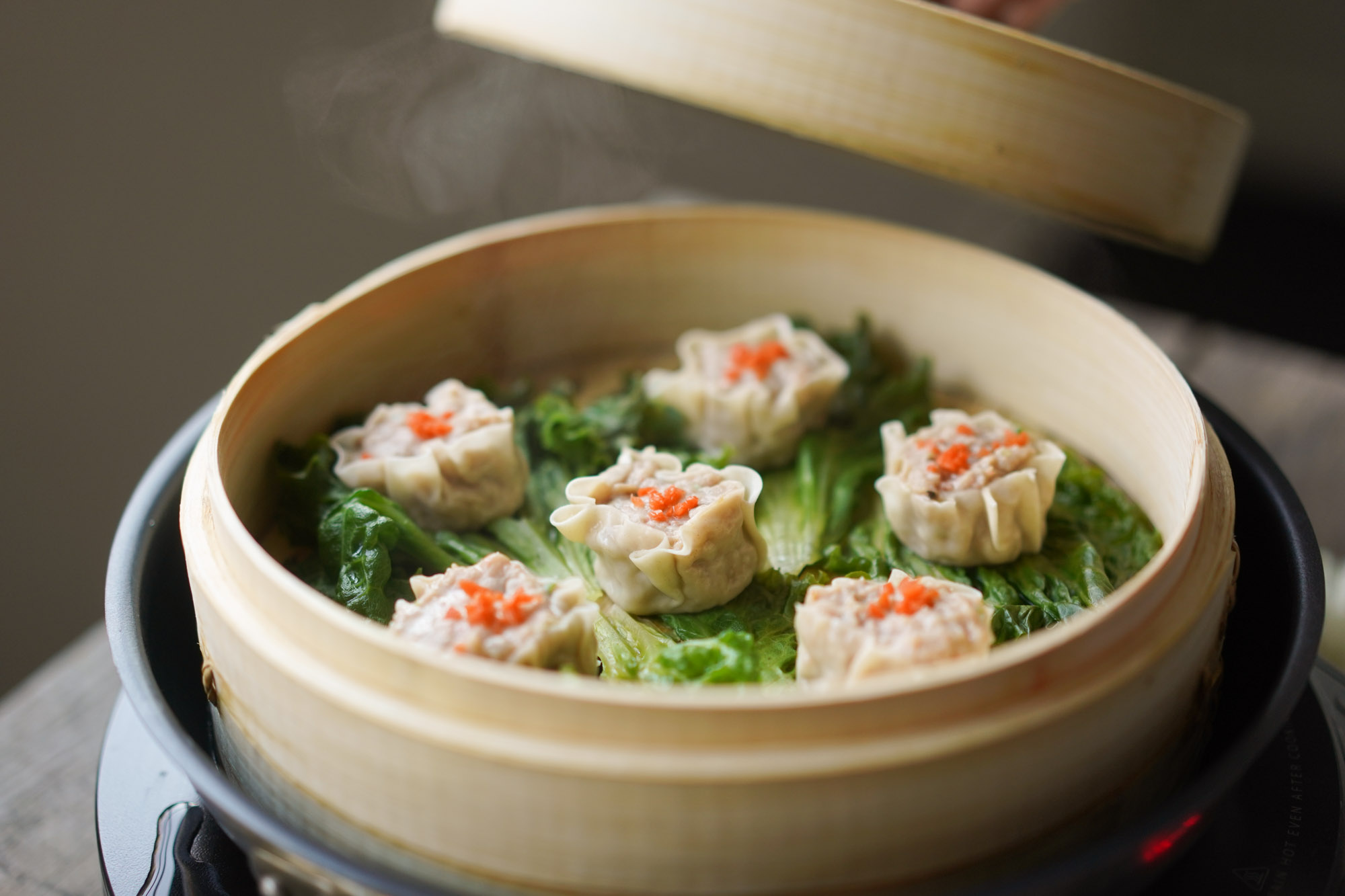
ASSEMBLE THE SIU MAI:
Line a bamboo steamer with perforated parchment paper, damp cheesecloth, or thin cabbage leaves. Take one wrapper and place a tablespoon of filling in the middle. Squeeze the sides of the wrapper up around the edges of the filling to create an open-topped pocket.

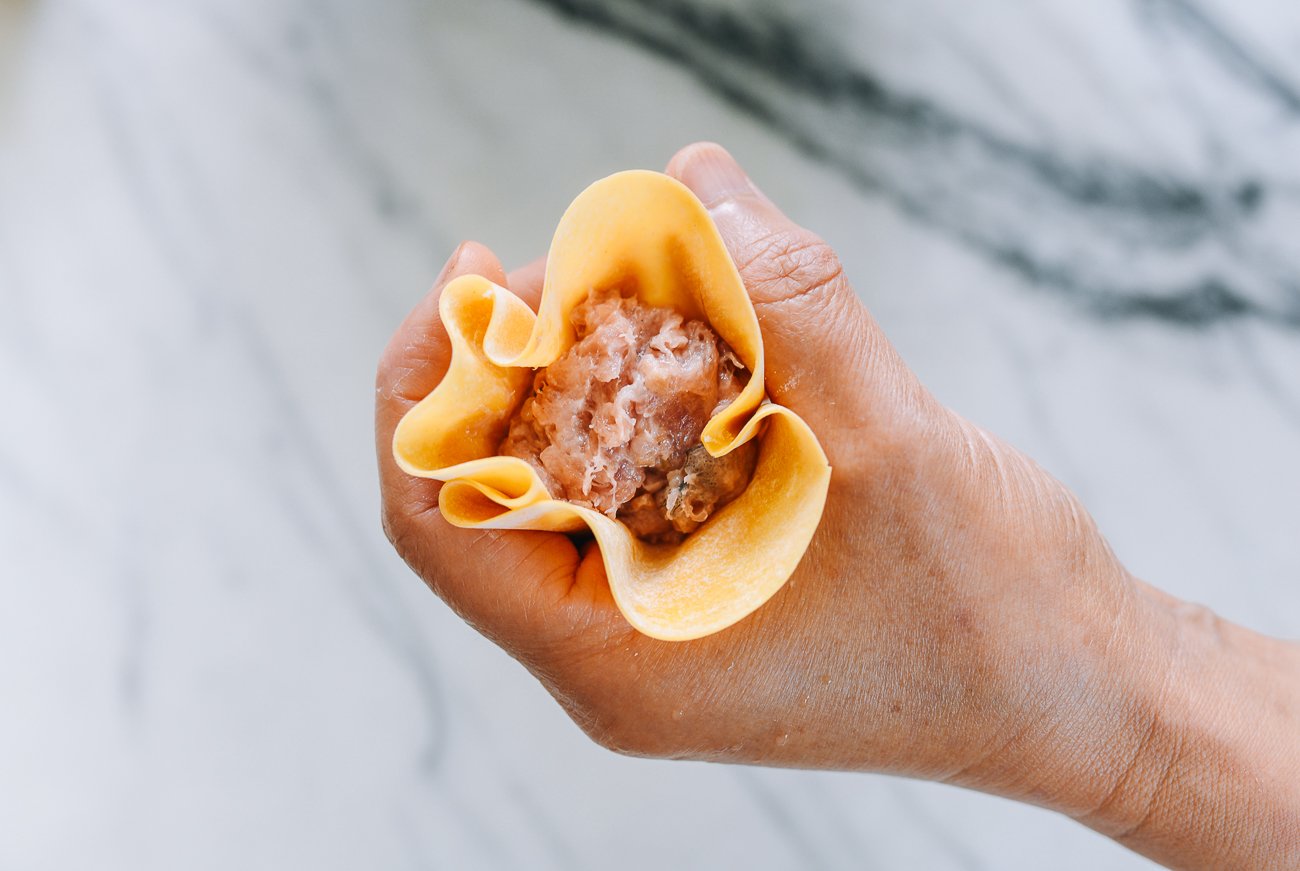
Use a butter knife to continue filling the wrapper until you’ve stuffed it to the top with filling. Then scrape the top flat. If using square wrappers, fold over any excess wrapper and squeeze the wrappers to the sides of the siu mai.
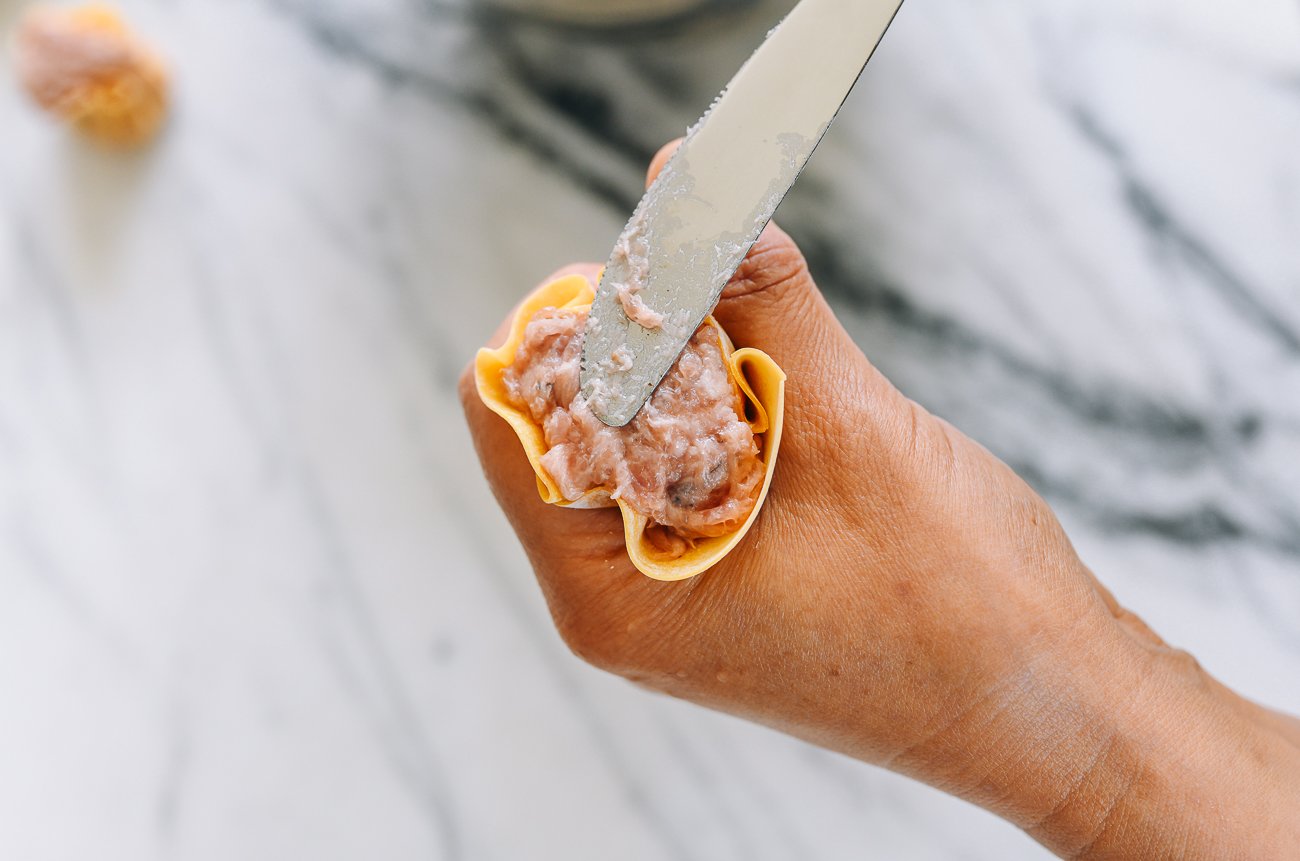
Continue until you’ve assembled all the siu mai. Transfer them to the lined steamer basket as you go, 1 inch (2.5cm) apart. (Place any siu mai that don’t fit in the steamer on a parchment-lined plate or sheet pan to cook in later batches or freeze.) Top the center of each siu mai with a small amount of the minced carrot.
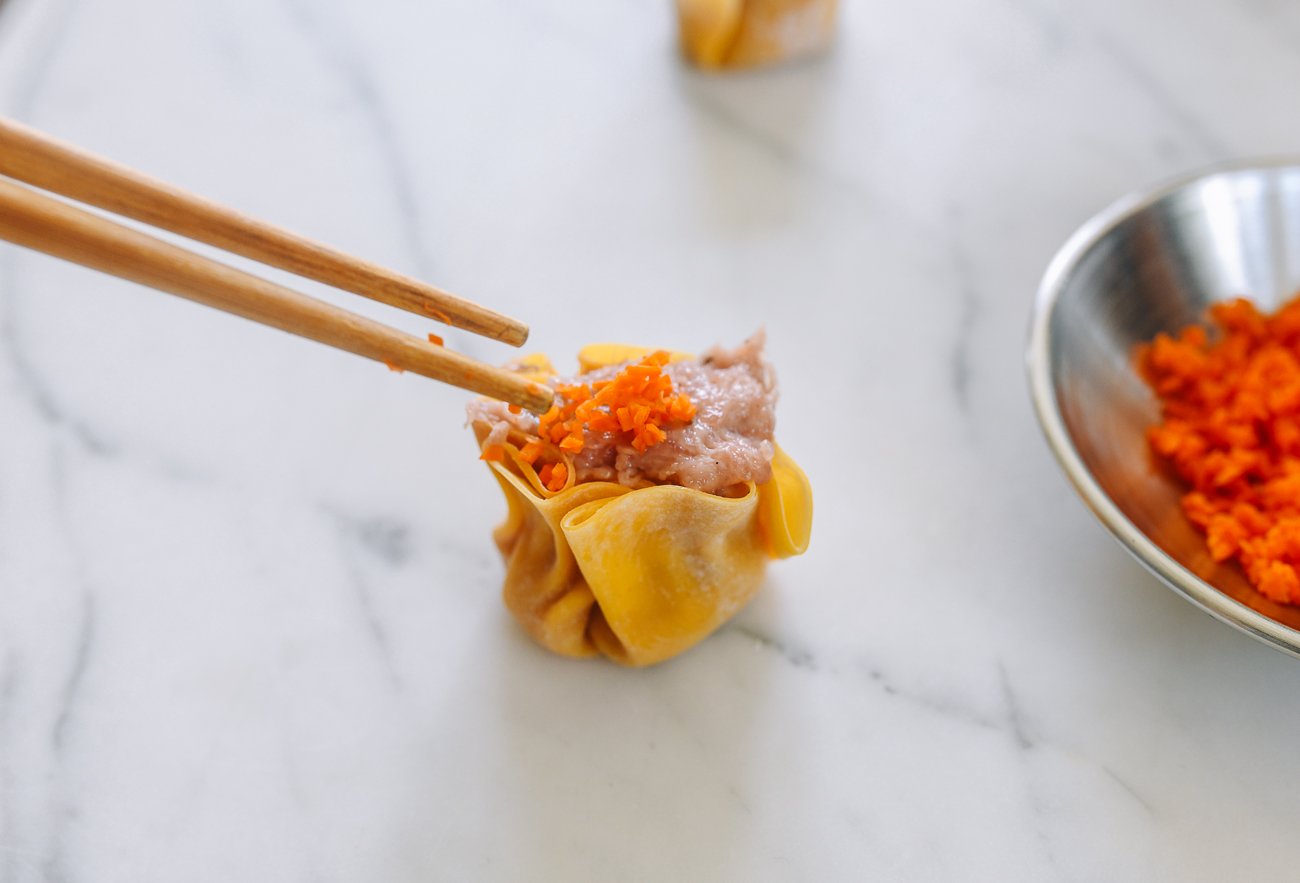
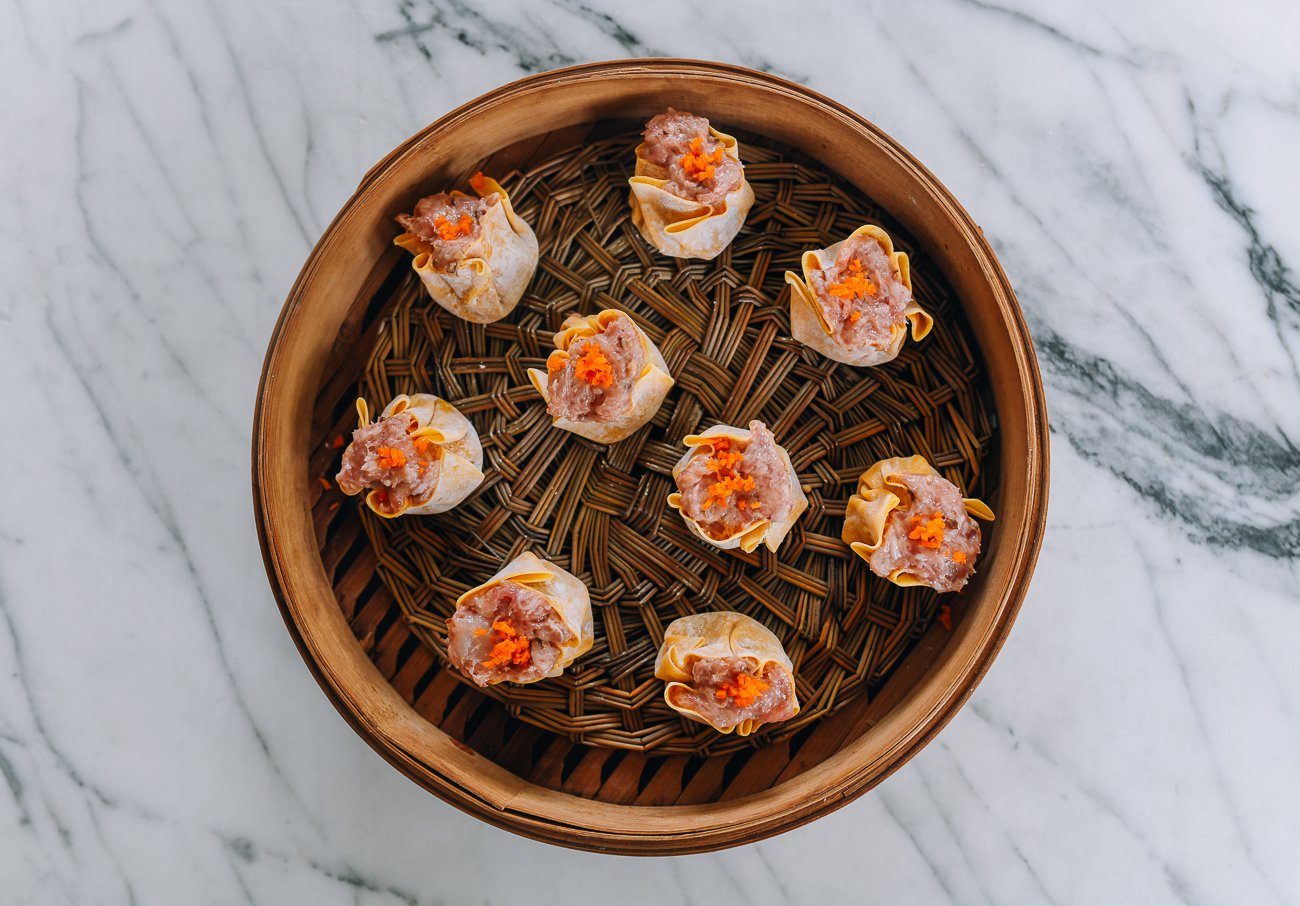
Siu Mai Recipe Instructions
Soak the shiitake mushrooms in the hot water for 2 hours (or overnight) until fully rehydrated. Squeeze any excess water out of the mushrooms. Trim away any tough stems, and very finely chop the mushrooms—you should have about ¼ cup.
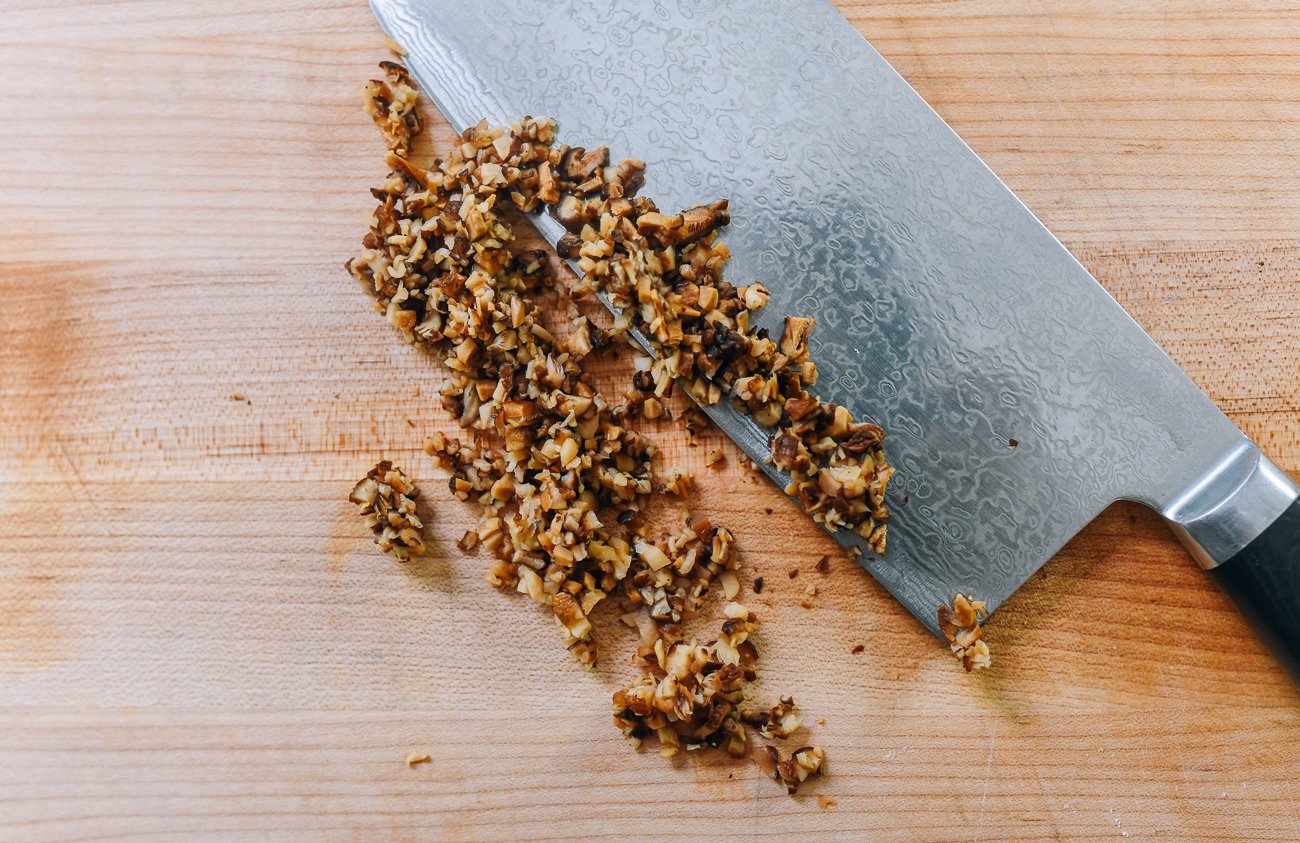
Add the shrimp to a medium bowl, and toss them with 1 teaspoon of the sugar, the baking soda, and the 2 tablespoons of water. Set aside for 15 minutes, then rinse the shrimp in a colander under running water until the water runs clear. Drain.

Meanwhile, to the bowl of a stand mixer fitted with the paddle attachment (or just a large mixing bowl, if mixing by hand), add the ground pork, the remaining tablespoon sugar, the cornstarch, Shaoxing wine, salt, and white pepper.
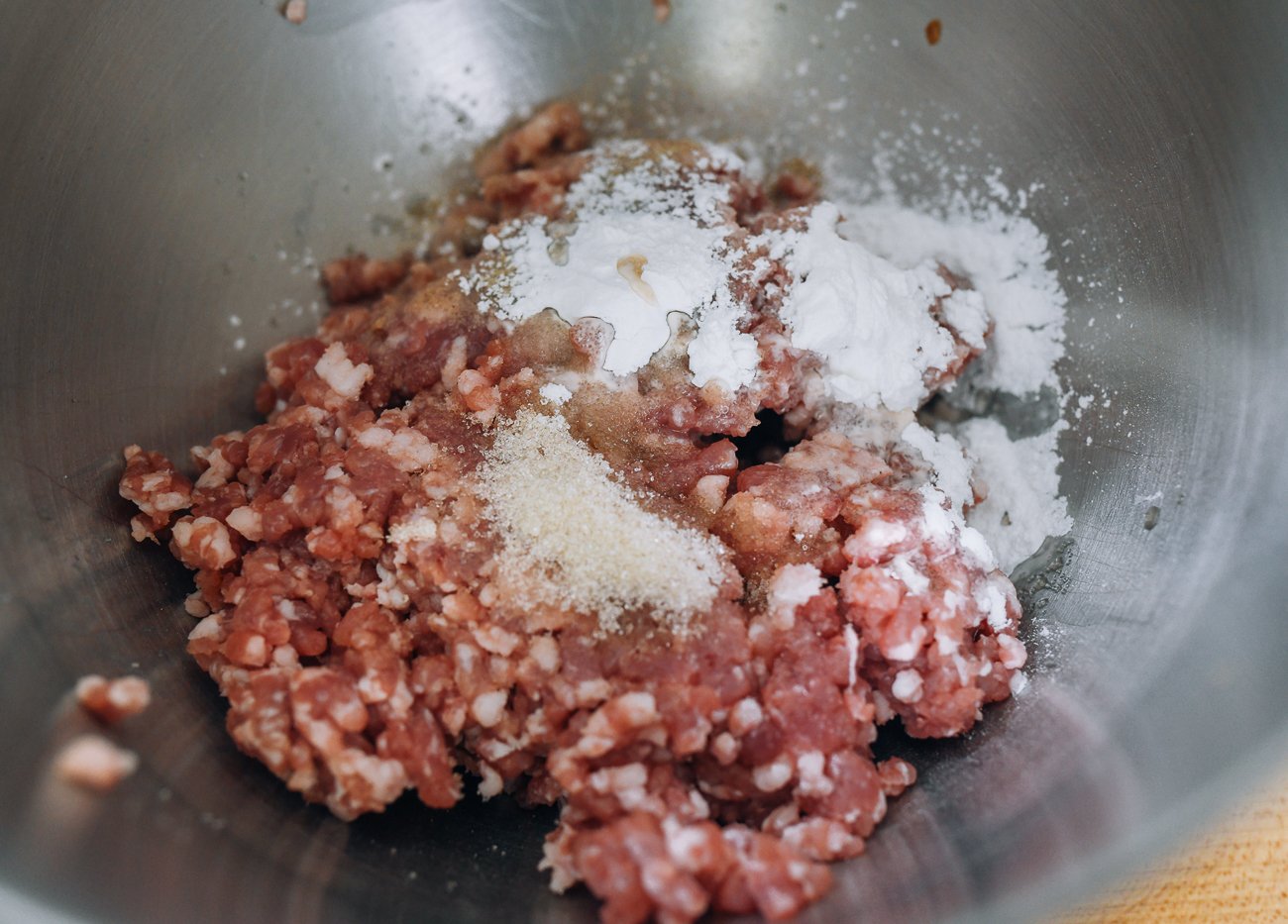
Mix on medium-low speed for 5 minutes, or until the mixture resembles a paste that sticks to the sides of the bowl. (Alternatively, mix vigorously in one direction with a pair of chopsticks by hand for 10 to 15 minutes until you get the same result.)
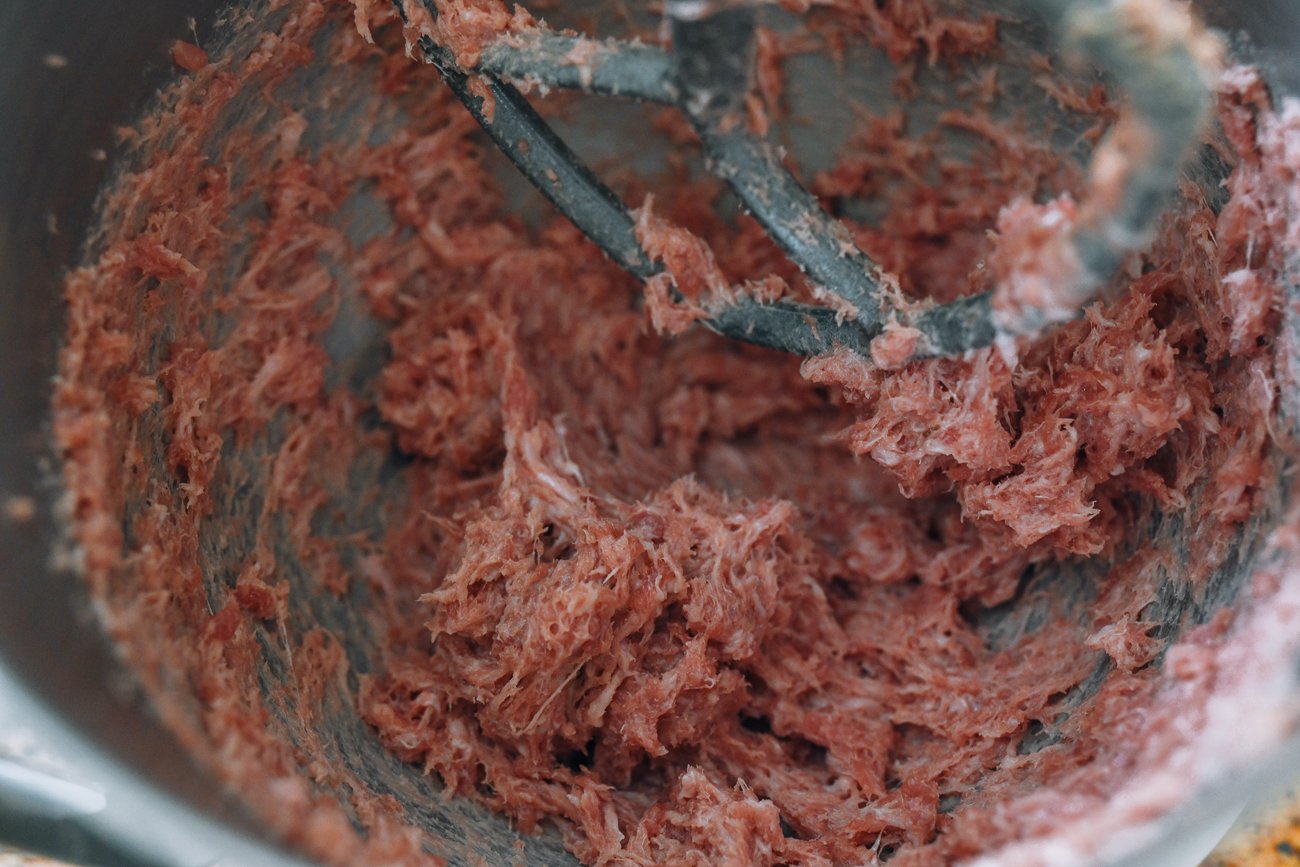
Scrape down the sides of the bowl, add the shrimp, and beat on low speed for 2 minutes. Increase the speed to medium and beat until the shrimp is well incorporated into the pork, another 2 minutes. (If mixing by hand, roughly chop the shrimp, add them to the pork, and mix in one direction for 10 minutes.)
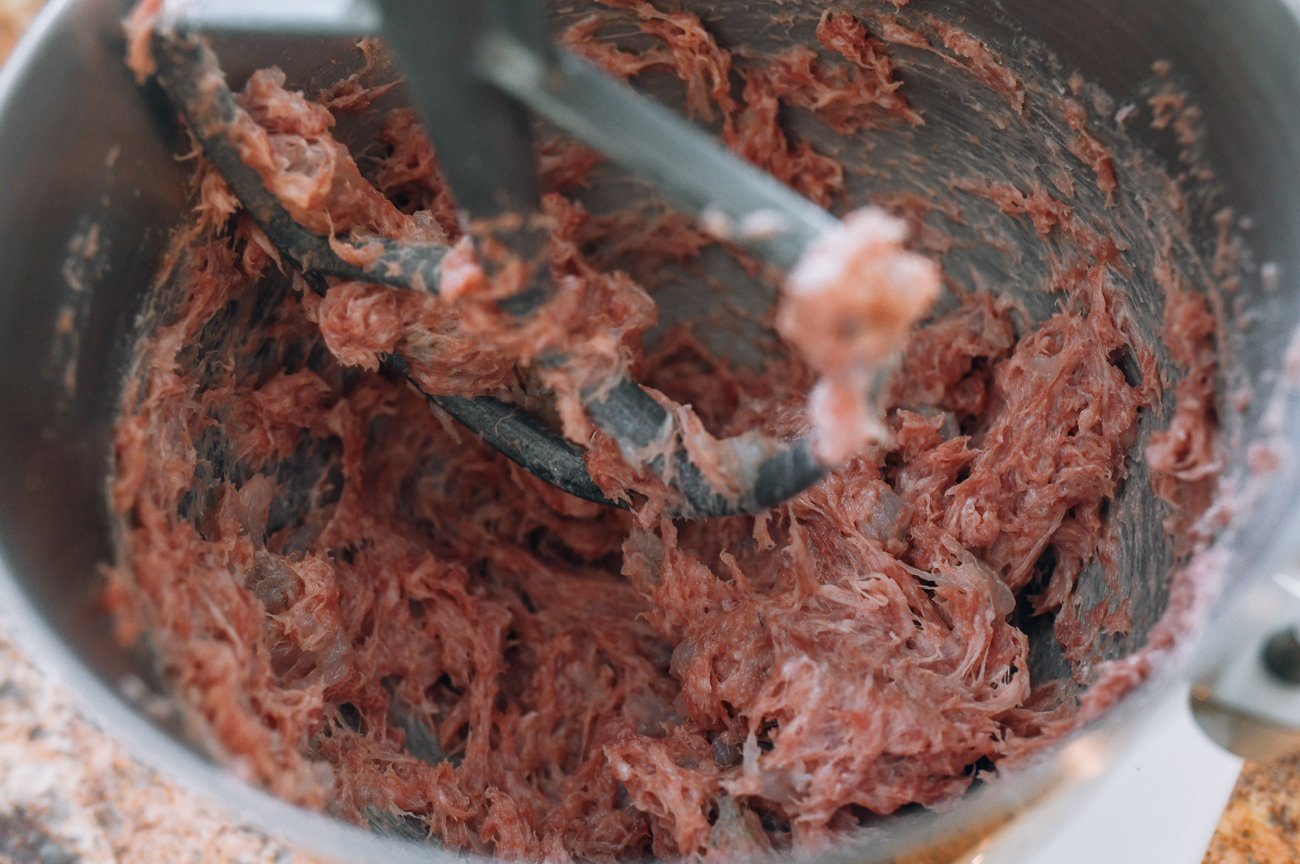
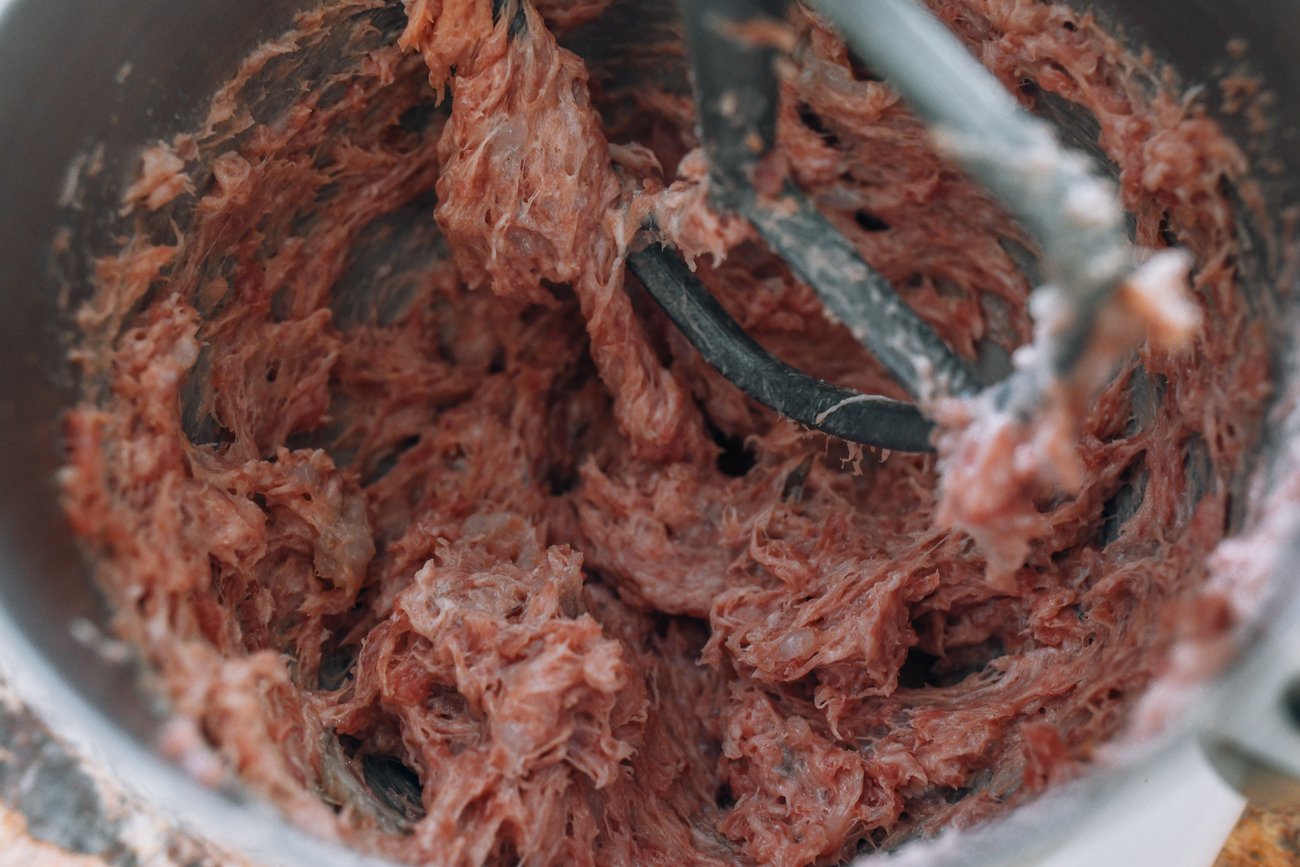
Add the chopped mushrooms, the neutral oil, oyster sauce, and sesame oil.
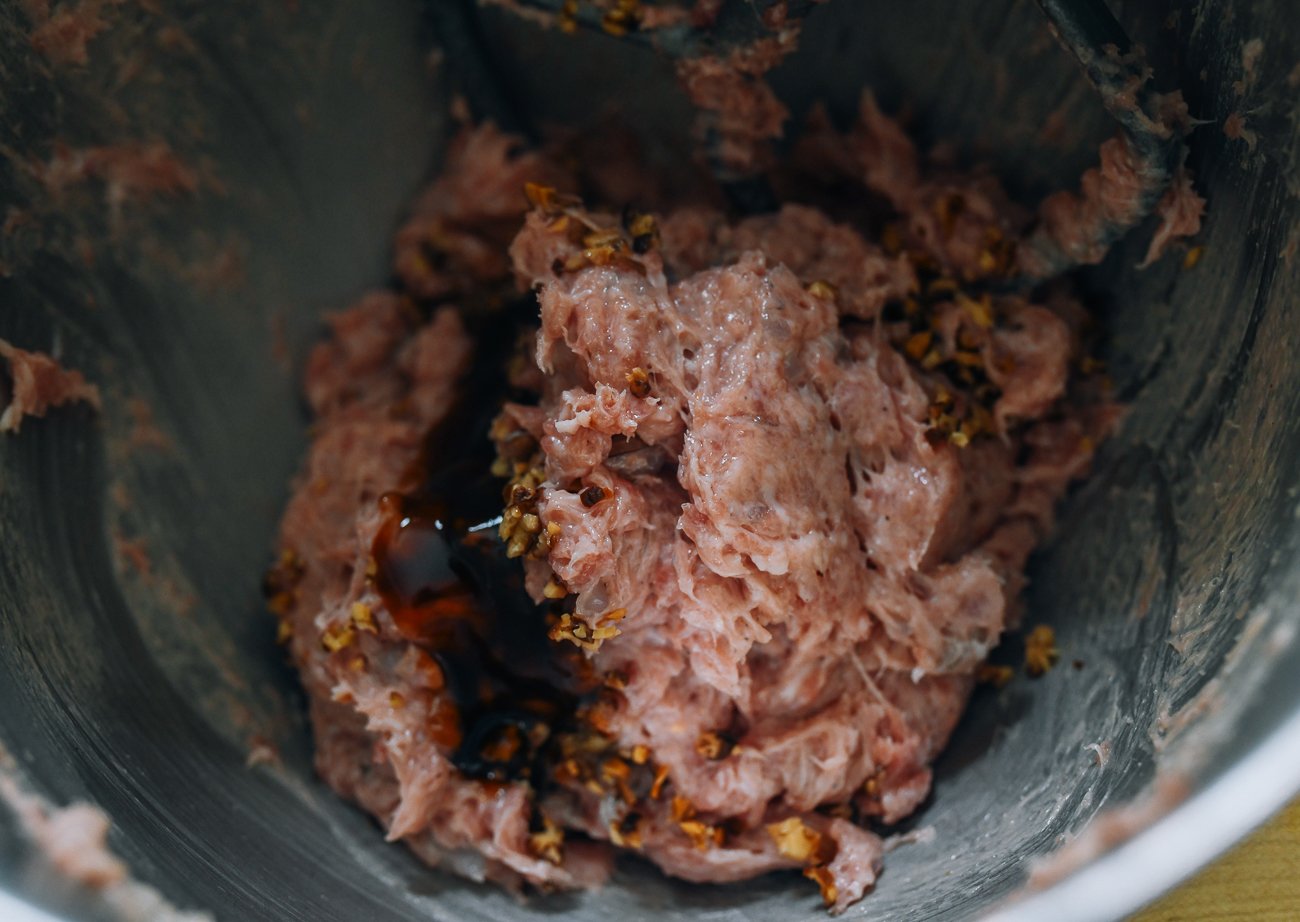
Mix on medium speed for 1 minute (or by hand for 2 to 3 minutes).
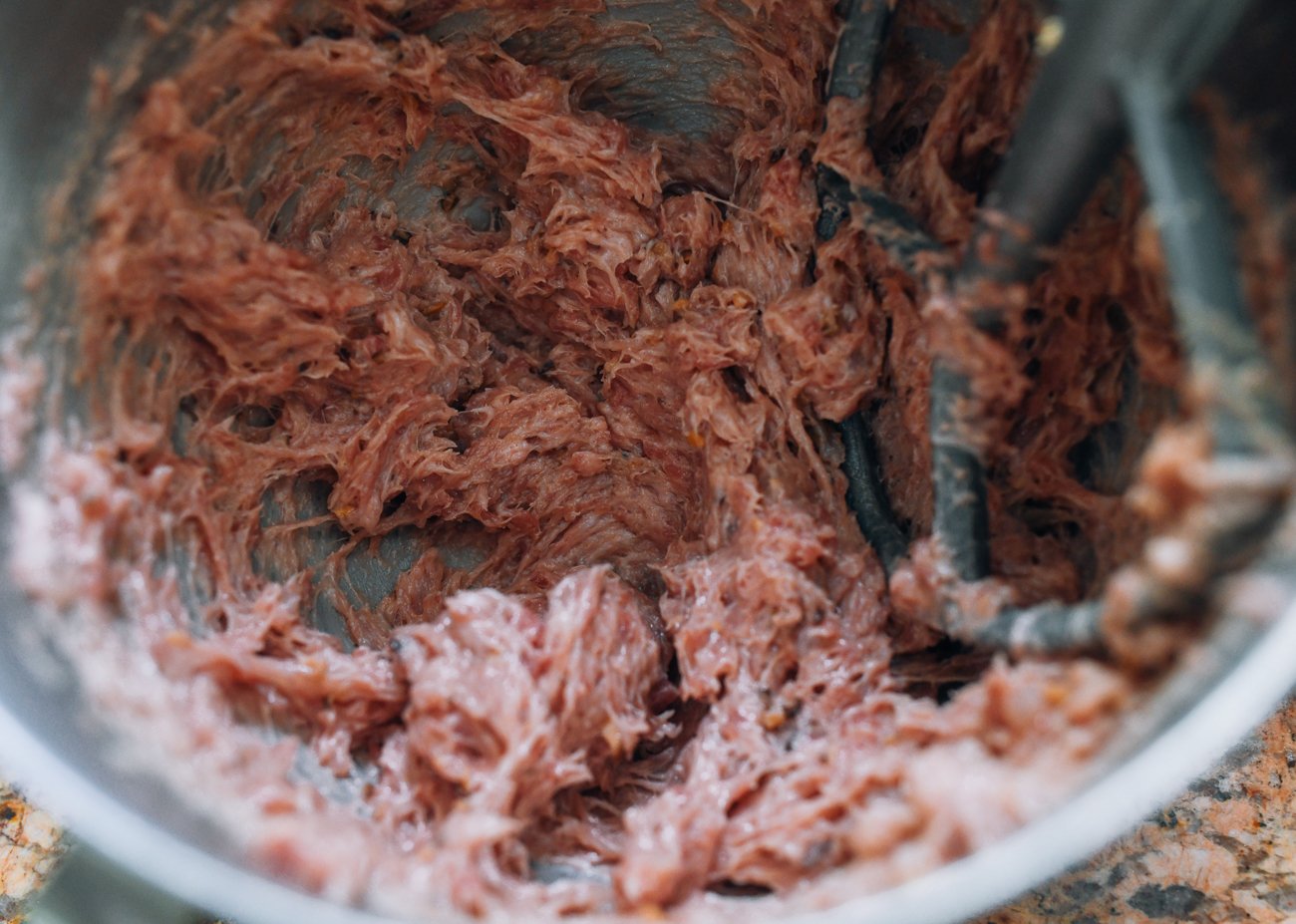
How to prepare a Shrimp Shumai
FAQ
What ingredients are in shrimp shumai?
Shrimp shumai are steamed dumplings traditionally made with a filling of ground shrimp, pork (optional), water chestnuts, ginger, garlic, and seasonings like soy sauce, sesame oil, and rice wine vinegar.
What is shumai made of?
Shumai, also known as siu mai or shaomai, is typically made with a filling of ground pork and shrimp, along with other ingredients like chopped Chinese mushrooms, green onions, and ginger, seasoned with soy sauce, sesame oil, Shaoxing wine, and other spices.
Is shrimp shumai healthy?
Shrimp shumai can be a moderately healthy choice, especially when steamed, as it provides protein and can be relatively low in calories compared to other dim sum options.
Is shrimp shumai steamed or fried?
Steam shumai for 8 to 10 minutes or until shrimp has just cooked through. Serve shu-mai hot with ponzu sauce or a mixture of soy sauce and sesame oil for dipping.
